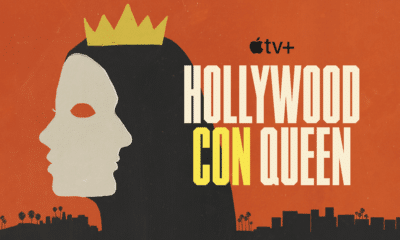Here at THN we couldn’t be happier that the BFI is currently celebrating all things SF with a plethora of events across the UK. With over 1000 screenings of classic film and TV at 200 plus locations, there’s a veritable constellation of sparkly gems for any SF aficionado to glut themselves with.
Cinema and science fiction have always been close bedfellows—and it’s no surprise really. As far back as Mary Shelley’s Frankenstein, weird and wonderful ideas about science, humanity, and the universe were captivating readers. And of course, we all know what a godsend Shelley’s creature was to the silver screen.
But what’s the magic ingredient which makes SF so enduring? You only have to cast your eyes down cinema or TV listings to see the number of features with a speculative element. The X-MEN franchise, GUARDIANS OF THE GALAXY, DAWN OF THE PLANET OF THE APES, GRAVITY, AGENTS OF S.H.I.E.L.D., UNDER THE DOME…the list goes on. Arguably one of the biggest TV shows of the last ten years, LOST, had enough SF tropes to sink a Galaxy-class starship, and it became the fodder of water cooler discussions in offices everywhere.
So join THN as we run down some of the top reasons why SF continues to capture our imaginations.
1. Black Mirror
The nineteenth century responded to cultural anxieties about modernity, identity, and a declining Empire with H. G. Wells’ fin de siècle stories. Darwin’s dangerous ideas resulted in Robert Louis Stevenson’s Strange Case of Dr Jekyll and Mr Hyde. Cold War paranoia and McCarthyism brought us INVASION OF THE BODY SNATCHERS (1956) with its alien pod people.
Perhaps this is why SF’s grip hasn’t slipped. In renaissance England, playwrights often set their political dramas in the courts of Spain and Italy to dodge censorship and, in a similar way, SF lets us explore topical issues through appropriately distanced and speculative means.
Take Ronald D. Moore’s reimagined Battlestar Galactica (2004-09). The series follows the last surviving humans in their search for the fabled thirteenth colony, Earth. In a typical SF trope, the slaves we created become our tormentors; the Cylons have had enough of being the robotic evolutionary equivalent of a toaster and instead focus their efforts on trying to wipe us out.
 But BSG spins it on its head. Not only do the Cylons now resemble humans (although how many of us look like Tricia Helfer first thing in the morning?), but the universe of BSG isn’t clear cut. It’s one filled with shades of grey, where the lines between terrorist and war hero blur.
But BSG spins it on its head. Not only do the Cylons now resemble humans (although how many of us look like Tricia Helfer first thing in the morning?), but the universe of BSG isn’t clear cut. It’s one filled with shades of grey, where the lines between terrorist and war hero blur.
This is a post 9/11 world where boundaries are constantly shifted, prisoners of war are tortured and the ‘good guys’ are suicide bombers. I mean, forget Homeland—BSG was disorientating audiences years before Nicholas Brody.
Things take an even darker turn in S3 when the Cylons invade and occupy New Caprica, and the series charts the human resistance’s strategy of suicide bombings, as well as the fate of collaborators. It’s telling this was first aired in 2006, at the height of the Iraqi insurgency and a few months before Saddam Hussain’s execution. It’s hard not to read the parallels and see the show as an exploration of contemporary events.
And even when the parallels between fiction and real life aren’t quite as deliberate, SF still provides us with a means to ask important questions. Take DAWN OF THE PLANET OF THE APES. Dr Mark Bould, film studies lecturer at UWE and co-editor of the Science Fiction Film and Television journal, points out that although it offers a stark reminder of how the powerful get to decide who’s human (and who’s not), it’s entirely fluke that its cinema release coincided with outrages in Gaza and Ferguson. He told us:
It could have come out any week and still gotten to the core of politics in some contemporary news story. One of the things that SF does so well is highlight how far we still have to go—and that’s partly because of its generic drive to imagine different worlds or different social relations.
Who said SF was just little green men?
2. They Came From Beyond
There’s a great scene in John Carpenter’s THEY LIVE! when Nada (Roddy Piper) finds a pair of sunglasses. But these aren’t just any old sunglasses, no siree. They let him see ‘the truth’. And what is this truth? Well, it’s that the media constantly transmits subliminal messages to us plebs (consume, obey, conform) while the fat-cat bosses are, in fact, grinning-skull aliens (we knew this anyway). But apart from being a how to guide in Marxist thought, THEY LIVE! reminds us that much of the appeal of SF comes from our ambiguous relationship with what is ‘other’.
From ALIEN to JOHN CARPENTER’S THE THING, and from WAR OF THE WORLDS to The X-Files’ Colonists and Bounty Hunters, the alien outsider is a tangible presence in SF—whether it’s a hostile invading force or a more insidious intruder, like in the various incarnations of V.
 Jonathan Glazer’s UNDER THE SKIN gives us Scarlett Johansson as the woman who falls to
Jonathan Glazer’s UNDER THE SKIN gives us Scarlett Johansson as the woman who falls to
earth, landing in a grim looking Glasgow and luring lusty men to their deaths. She’s clearly alien as dangerous other—a variant we’ve seen before in the She-Mantis in the Buffy episode ‘Teacher’s Pet,’ or space vampire flick, LIFEFORCE.
Of course, UNDER THE SKIN really just forces us to confront the dark part of ourselves. It’s a nihilistic, cold journey which ends in yet another scene that shows humanity to be lacking, well…humanity. Honestly…bloody extra-terrestrials. They come to our planet, take our jobs, eat our men. Who actually is the “alien” here after all? Why can’t all space visitors be more like E.T.?
3. The Undiscovered Country
But what is SF if not an exploration of the great unknown, the central “what ifs”, or, to borrow the Bard, the ‘the undiscovered country’ (although we all know you need to read Shakespeare in the original Klingon to appreciate it fully).
What does it mean to be human? Why are we even here? William Gibson’s Neuromancer and Philip K. Dick’s Do Androids Dream of Electric Sheep explore the big questions around identity, the past and our memories, while INCEPTION brings Descartes to the big screen. Baudrillard’s postmodern work Simulacra and Simulation gets an actual cameo in THE MATRIX (although the philosopher clearly wasn’t a fan of either SF or possibly Keanu’s acting, as he denied any link).
Of course, if you want to meditate on the true meaning of life, look no further than Douglas Adams’ The Hitchhiker’s Guide to the Galaxy in its various incarnations. Why spend so much time in deep thought when the answer to all of the big questions is 42?
4. The Shape of Things to Come
Or perhaps it’s SF’s ability to look forward that entrances us. To have a glimpse, however fleeting, into our future is a valuable gift (remember, we’re all going to be travelling by hoverboard next year).
What lies in store for us has generally settled into two camps: ‘intrepid explorers of future perfect’ and ‘the worst possible outlook imaginable’. Ah yes, the eternal dichotomy of Star Trek vs THE MATRIX.
It looks like we’re possibly headed to a bright, shiny future, where the evils of money and war have no place (well, unless you’re in Quark’s Bar) and where we’ve all joined together to explore and better humanity. Of course, this version of the future still has its troublesome spots—your Borg and Klingons and Cardassians and Hirogen and Species 8472. But in the ST world, the ominous ‘other’ soon becomes more familiar, like Hugh in ‘I, Borg’, or one that changes alliances and sympathies, such as DS9’s Gul Dukat.
Or perhaps we’re headed to hell. Pollution, war, natural disaster, over-globalisation, A.I. and hostile life forms are sending us to BLADE RUNNER’S Hades landscape or THE MATRIX’S desert of the real.
 Joss Whedon’s Firefly offers a slightly different view of our path—a future of globalisation where the only surviving world superpowers, China and America, have joined forces as the Alliance. Forced to leave Earth-That-Was, Captain Mal Reynolds captains the crew of Serenity through a postmodern cultural melting-pot where the division between rich and poor has just got bigger.
Joss Whedon’s Firefly offers a slightly different view of our path—a future of globalisation where the only surviving world superpowers, China and America, have joined forces as the Alliance. Forced to leave Earth-That-Was, Captain Mal Reynolds captains the crew of Serenity through a postmodern cultural melting-pot where the division between rich and poor has just got bigger.
Whatever way the future unfolds, it looks like we’re in for quite the ride.
So without further ado, grab another Pan-Galactic Gargleblaster, put on your 3D glasses, sit back and enjoy the spectacle. The future is already here.
Days of Fear and Wonder runs until December. You can find out more, including events near you, on the BFI’s website. Dr Mark Bould’s Solaris: BFI Film Classics and Science Fiction: The Routledge Film Guidebook both accompany the season.
Claire Joanne Huxham comes from the south-west, where the cider flows free and the air smells of manure. She teaches A-level English by day and fights crime by night. When not doing either of these things she can usually be found polishing her Star Trek DVD boxsets. And when she can actually be bothered she writes fiction and poetry that pops up on the web and in print. Her favourite film in the whole world, ever, is BLADE RUNNER.

Latest Posts
-


Apple TV
/ 6 hours agoApple’s documentary series ‘Hollywood Con Queen’ gets a trailer
Apple has debuted the trailer for its upcoming limited documentary series Hollywood Con Queen...
By Paul Heath -


Film News
/ 7 hours agoTrailer: Russell Crowe in ‘The Exorcism’
The movie has a release date set for this summer.
By Paul Heath -


Film Reviews
/ 17 hours ago‘In The Land Of Saints and Sinners’ review: Dir. Robert Lorenz (2024)
The film is released on Netflix this week.
By Paul Heath -


Home Entertainment
/ 1 day ago‘Risky Business’ and ‘Blow Out’ are getting the UK Criterion treatment
Risky Business and Blow Out will be released on UK Criterion 4K Blu-ray this...
By Paul Heath
















